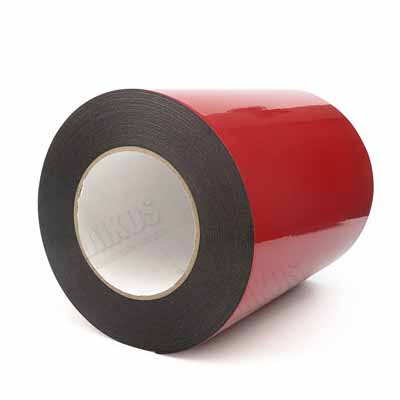If you have ever been in the market for an adhesive, you've likely noticed the term "thermal tape" in the product name. In essence, this type of adhesive is a type of thermally conductive glue. These adhesives can be found in many forms, from double-sided tape to paste. Let's take a closer look at what this product is and how it works. This is thermal tape in a nutshell.
One of the main purposes of thermal tape is to insulate or attach heat-generating components. As such, the thermal tape is made to transfer heat efficiently. They come in various lengths, and you can use longer pieces for some applications. Some thermal tapes are double-sided, making them more suitable for joining different components. Listed below are some common uses for thermal tape. Once you've decided what you need, find a supplier who will provide you with samples.
Double-sided thermal tapes are strong and durable. This material is designed to adhere to surfaces, such as metals and plastics, and can be permanently positioned. Its composition is a mix of rubber and glass fiber, and it is an excellent material for attaching heat sinks to computer components.
In electronics, thermal tapes have many applications. Thermally conductive tapes are used to bond cooling devices, IC packages, power transistors, and other heat-generating components. These thermal tapes are easy to apply and come in single and double-sided options. And you don't have to worry about adhesives or messy thermal pastes getting in the way of the application. These tapes can withstand long-term use without damaging delicate components.
The benefits of thermal tapes are numerous. They provide superior thermal conductivity, strong adhesion to low surface energy substrates, and are free of six restricted materials in the RoHS Directive. They are an excellent choice for many applications, including LED lighting, electronics, and batteries. They can also provide damping and support for flex bonding. Despite their many uses, thermal tapes are usually used to coat electronics. They can also support flex bonding and are highly flexible.
Besides being effective for heating and cooling, the thermal tape is also effective for pipes, which are exposed to extreme temperatures. Whether piping is used for water lines, insulated walls, or exposed pipes, the thermal tape will keep the temperature where it is required. And because it is thin, it can be easily spread over die-cut surfaces. Aside from that, the thermal tape also helps prevent mechanical abrasions. This tape helps prevent the formation of cracks in insulation materials and can protect against mechanical abrasions.
When a thermal tape is used to bond computer chips with heatsinks, it has a number of benefits. This adhesive can be used to hold heatsinks in place while transferring heat away from the chip. It is not a good heat conductor, but it works well enough to prevent short circuits. Thermal tape is a popular choice in many instances. It can help increase the life of your computer's chips while allowing it to run more efficiently.




